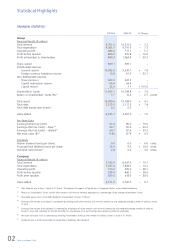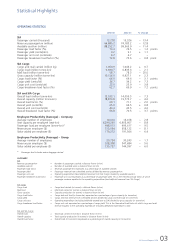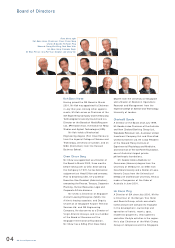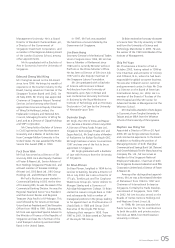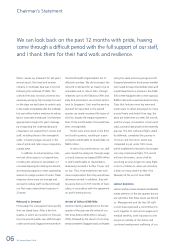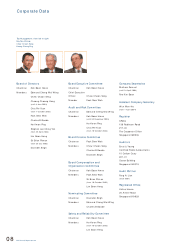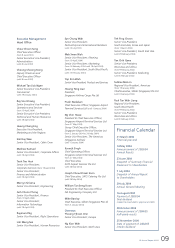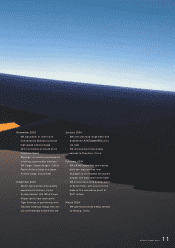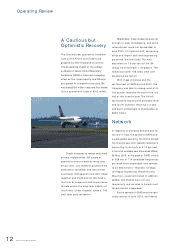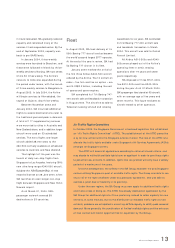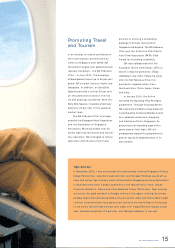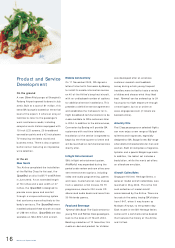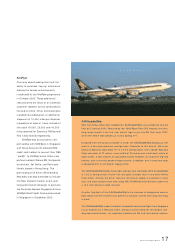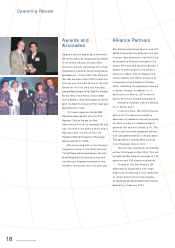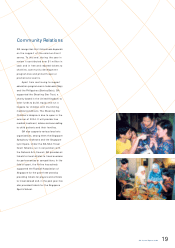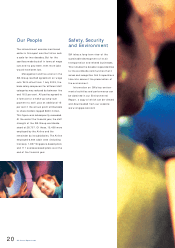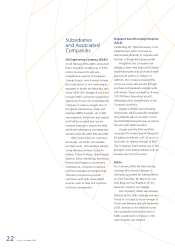Singapore Airlines 2004 Annual Report Download - page 14
Download and view the complete annual report
Please find page 14 of the 2004 Singapore Airlines annual report below. You can navigate through the pages in the report by either clicking on the pages listed below, or by using the keyword search tool below to find specific information within the annual report.
Operating Review
A Cautious but
Optimistic Recovery
The financial year opened on a sombre
note as the Airline continued to be
plagued by events beyond its control.
The devastating impact of the sudden
outbreak of Severe Acute Respiratory
Syndrome (SARS) in Asia had a crippling
effect on the travel industry, and SIA was
not spared. At the peak of the crisis, SIA
was losing $5-6 million a day and thus ended
its first quarter with a loss of $312 million.
Drastic measures to reduce costs were
quickly implemented: SIA’s scale of
operations was cut back by more than
30 per cent, non-essential projects were
deferred or cancelled, and recruitment
was frozen. Management and staff rallied
together and made painful sacrifices in
the form of wage cuts and no-pay leave
to help ensure the long-term viability of
the Airline. Under a special scheme, 143
staff took early retirement.
Regrettably, these measures were not
enough to stem the bleeding, and some
retrenchment could not be avoided. In
June 2003, 414 ground staff, comprising
office and airport staff and engineering
personnel, lost their jobs. This was
equivalent to 1.5 per cent of the SIA
Group’s staff strength in Singapore. The
following month 156 cabin crew and
26 pilots were laid off.
With these initiatives and the
containment of SARS by mid-2003, the
Company was able to recoup most of its
first quarter losses by the end of the first
half of the financial year. The Airline
continued its recovery with profitable third
and fourth quarters, resulting in a year-
end profit attributable to shareholders of
$849 million.
Network
In response to plunging demand due to
the war in Iraq, the spread of SARS and
a weak global economy, the Airline started
the financial year with capacity reductions,
amounting to as much as 31.5 per cent
in terms of available seat kilometres (ASKs).
By May 2003, at the peak of SARS, a total
of 358 out of 719 scheduled frequencies
per week were suspended, and services
to six destinations – Brussels, Chicago,
Las Vegas, Kaoshiung, Hiroshima and
Mauritius – were terminated. In addition,
Jeddah and Madrid went off-line
temporarily, and services to Karachi and
Lahore remain suspended.
As the spread of SARS was brought
under control in June 2003, confidence
12 SIA Annual Report 03/04


